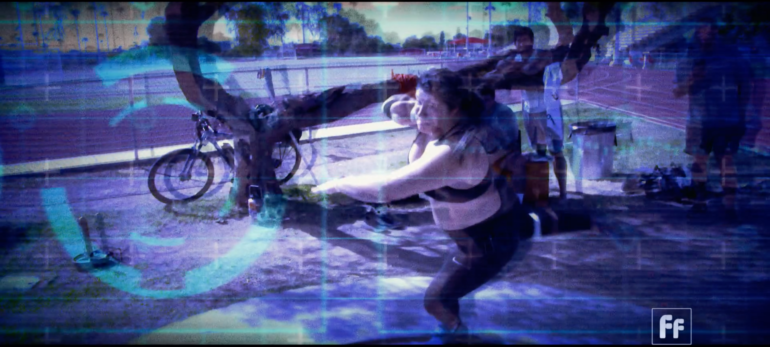It started as technology designed by the military to track missiles. Now technology like this is being used in professional sports to track the ball and a player’s motions, and data is then analyzed to create new plays, improve performance and avoid injuries.
Former Olympian gymnast Phil Cheetham is now the head of sport technology for the U.S. Olympic Committee. He developed one of the first sports motion analysis systems specifically meant to measure the biomechanics of a golfer’s swing. This technology has now become standard in 3-D golf-swing analysis.
Whether a golf club face is too open or too closed by 1 degree can make a huge difference, Cheetham said.
“The technology has to be very, very accurate. And that’s one of the things I’m passionate about,” he said.
Coaches and athletes can then develop training programs that address what the data is telling them about the golfer’s swing.
Cheetham has also worked with Olympic-level shot put throwers. Chase Ealey is now ranked number two internationally in shot put.
Using the 3-D technology Cheetham developed, Ealey was able to successfully change throwing techniques, improving her throw by 1-1/2 meters.
“It’s almost like I caught the right breeze and [the ball] just took off,” Ealey said.
Technology in sports is not only changing how athletes train, but also how judges score. In fencing, for example, a wireless scoring system allows judges to see when a hit occurs in this fast-moving sport.
“What I love most about about fencing is that it allows me to be competitive and be unapologetically competitive,” said Olympic bronze medal fencer Ibtihaj Muhammad.
Muhammad was the first athlete representing the United States to compete while wearing a hijab.
“We have cultural boxes that we create for our kids,” Muhammad said. “We have these different spaces that we tell them these are where a girl, these are the limitations we’ll put on our girls. These are the sports that our boys can play. And I would like for us to challenge those ideas.”
 CGTN America
CGTN America
